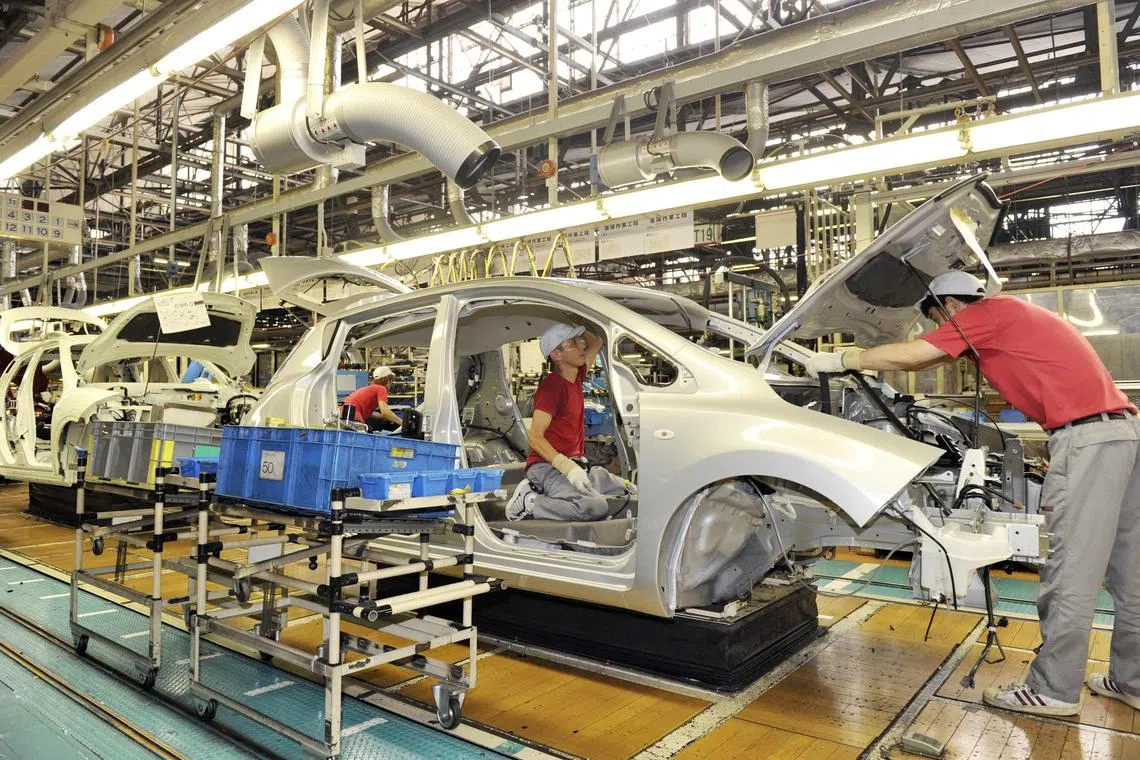Asia manufacturing outlook at lowest since pandemic on Trump tariffs
Sign up now: Get ST's newsletters delivered to your inbox

Confidence in future output across the region fell to the lowest since July 2020, according to S&P Global purchasing managers’ index data published on Aug 1.
PHOTO: AFP
Follow topic:
HONG KONG - Manufacturers across South-east Asia turned the least optimistic about future growth since the depths of the Covid-19 pandemic amid US President Donald Trump’s long tariff roll-out, even as activity improved in July.
Confidence in future output across the region fell to the lowest since July 2020, according to S&P Global purchasing managers’ index (PMI) data published on Aug 1.
The pessimism comes even as overall output improved in July, as the headline index of activity rose for the first time since March to 50.1, just above the 50-line demarcating growth or contraction. That is after contracting in June the most in nearly four years.
Manufacturers across South-east Asia, which the world relies on for goods, have been whipsawed since early in 2025 by White House trade policy. After unveiling in April some of the highest tariff rates in Asia, Mr Trump has since set tariff rates of 10 per cent to 40 per cent for the region.
Factory activity also shrank in export powerhouses China, Japan and South Korea.
The S&P Global China General Manufacturing PMI fell to 49.5 in July, from 50.4 in June, undershooting analysts’ expectations of 50.4 in a Reuters poll and dropping below the 50 threshold that separates growth from contraction.
The reading comes a day after an official survey showed China’s manufacturing activity shrank for a fourth straight month in July, suggesting that a surge in exports ahead of higher US tariffs has started to fade while domestic demand remained sluggish. China faces an Aug 12 deadline for its tariff truce with the US to expire.
The S&P Global Japan manufacturing PMI also fell to 48.9 in July, from 50.1 in June, a sign that US tariffs were hurting the world’s fourth-largest economy.
Most of the survey data was collected before the announcement of a Japan-US trade agreement in July, which lowers tariffs imposed on Japan to 15 per cent from a previously threatened 25 per cent.
As the trade deal with Washington kicks in, “it will be important to see if this will translate into greater client confidence and improved sales in the months ahead”, said Ms Annabel Fiddes, economics associate director at S&P Global Market Intelligence, which compiles the survey. South Korea also saw factory activity contract in July for the sixth straight month, with the S&P Global PMI falling to 48.0 in July, from 48.7 in June.
The survey was conducted from July 10 to July 23, before South Korea on July 30 reached a trade deal with the US lowering tariffs to 15 per cent from a threatened 25 per cent.
Factory activity in July expanded in the Philippines and Vietnam, but shrank in Taiwan, Indonesia and Malaysia, PMIs showed. BLOOMBERG, REUTERS

